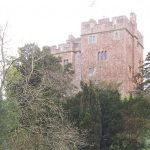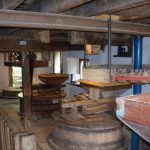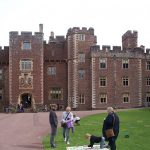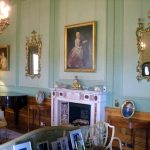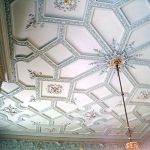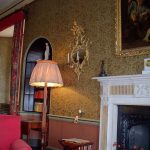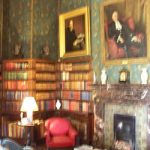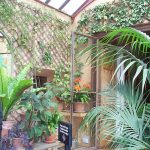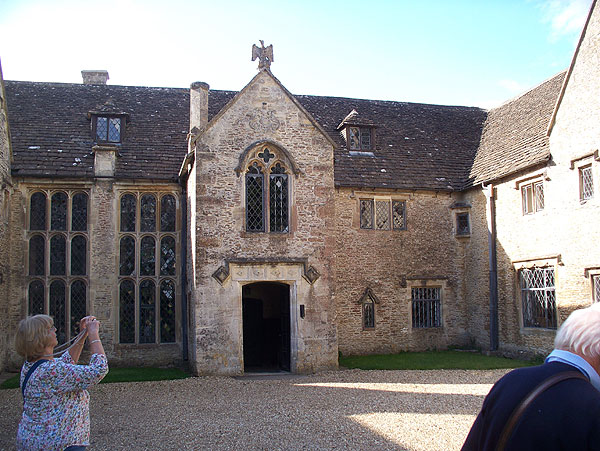 Privately Owned
Privately Owned
The core of Chavenage house dates from the 16th century, with additions in the 17th century and early 1900’s. The tour takes in the oldest rooms of the house, which have many original and interesting contents. The Chapel (restored and altered in 19th century) is also worth seeing.
Cromwell slept in one of the bedrooms.
Chavenage retains the atmosphere of a family home, and the family do not employ any staff for opening the house to the public. The tours conducted by George Lowsley-Williams or his sister Caroline are immensely entertaining and informative.
The house is frequently used as a film location for films and TV series, e.g. Poldark.
The grounds can be visited but are unremarkable.
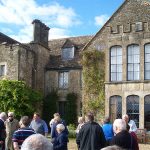
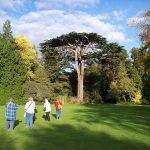
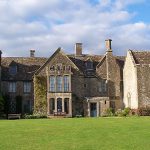
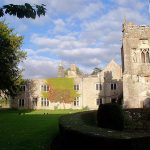
Rodmarton Manor, Gloucestershire
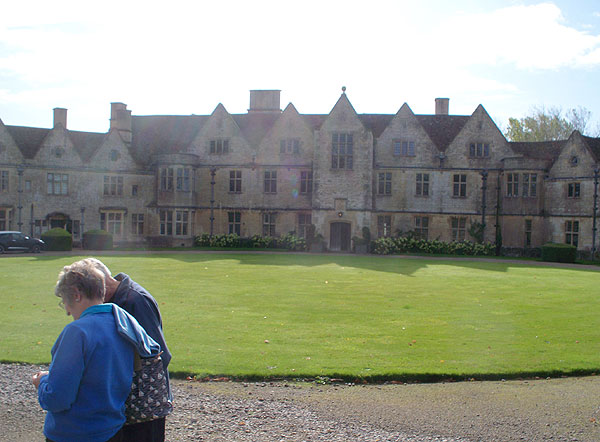 Privately Owned
Privately Owned
Despite its Jacobean appearance, Rodmarton Manor was built in 1909-1927 for Claud Biddulph and his wife. The project was much influenced by the Arts & Craft movement, and was built by hand using local labour and materials. The furnishings were made by craftsmen in Arts & Craft style, and remain in the house.
The interior design and furnishings are of particular interest.
Outside are various sections of garden – a pleasant terrace garden behind the house, and to one side a hedged long walk with fine borders, and a large kitchen garden, partly laid to lawn.
Well worth a visit, particularly for Arts & Crafts enthusiasts.
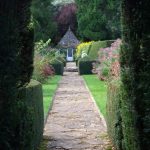
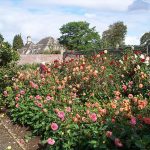
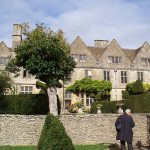
Gloucester Cathedral
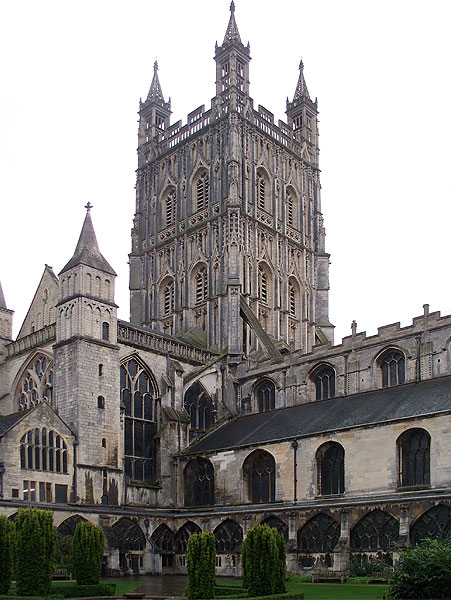 The cathedral was founded in Norman times, as can be seen from the massive round nave pillars topped by round Norman arches. Various alterations and additions were made in the medieval Gothic period.
The cathedral was founded in Norman times, as can be seen from the massive round nave pillars topped by round Norman arches. Various alterations and additions were made in the medieval Gothic period.
The fine lattice stonework on the tower can be seen from afar. Close up, the size of the building both inside and out is impressive. The East window, one of the biggest such windows in England, is vast. There is a complete cloister roofed with vaulted and densely carved stonework. The Lady Chapel is very large, and decorated with stained glass and carved stone.
Everywhere one looks in the later built parts is a riot of carved stone, and carved woodwork in the choir.
Also don’t miss the cathedral library, up two flights of stairs.
The cathedral is not to be missed if you are visiting the city.
Admission for the irreligious is “by donation” (suggested donation £5). Conducted tours are available.
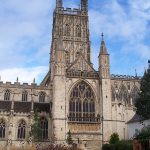
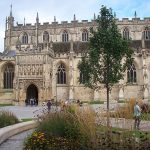
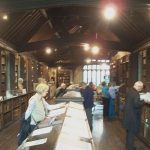
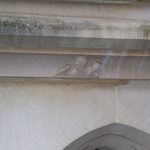
Sudeley Castle, Gloucestershire
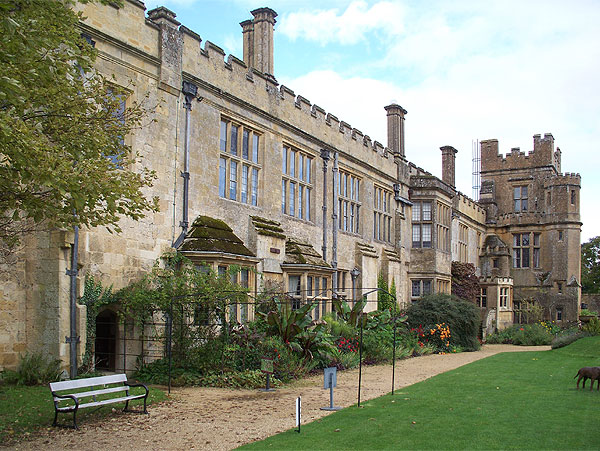 Privately Owned
Privately Owned
There has been a castle at Sudeley since Norman times. Parts of the present castle date from the 15th century. The castle was fought over in the English Civil War and afterwards was partially demolished by the Parliamentarians, leaving it as an uninhabitable ruin. In 1837 the picturesque ruin was bought by two wealthy industrialists, the Dents, who restored most parts of the castle as a Victorian country house. Richard III’s hall was left as a picturesque ruin.
Detached from the house is an interesting chapel, also restored in the 19th century.
Many historic names are associated with Sudeley, including Richard III, Henry VIII, Queen Katherine Parr, Lady Jane Grey, Elisabeth I, and George III.
Various rooms are open to the public, but most of these are exhibition spaces. The ‘Castle Rooms’ contain some furnished rooms with interesting contents.
In the grounds are lawns, formal and informal gardens, and an aviary with a collection of exotic pheasants. The grounds are well worth a walk around the circuit.
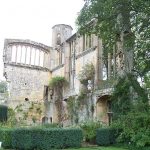
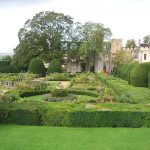
Sezincote, Gloucestershire
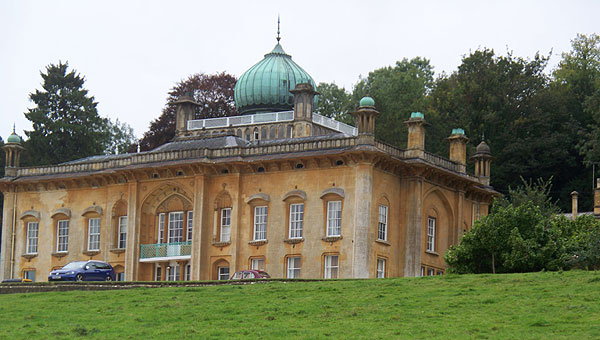 Privately Owned
Privately Owned
Sezincote was built in 1805-1807, for Charles Cockerell, brother of John Cockerell who bought the estate in 1795. Both brothers had served in India. Charles appointed as architect another brother, Samuel Pepys Cockrell, to build a house in the Indian manner. Externally the house contains both Mogul and Hindu elements. The stable block partly visible beyond is also built in an Indian style, and various Indian-style sculptures can be found in the grounds: bulls on the entrance bridge, a 3-headed snake, and a pair of elephants.
The interior of the house is in a Greek Revival style. The principal rooms are on the first floor. The rooms on display are well furnished and finished. The central staircase under the dome is of ‘flying’ design, supported by curved cast-iron arches.
The house has two wings leading to pavilions, one being a curved conservatory and the other containing extra accommodation and ending in a pavilion where Charles Cockerell slept in a tent.
Apparently the house was in poor condition by the time the next owners, the Kleinworts, bought it in 1944. The interiors have been redecorated and restyled fairly recently.
There are sloping informal gardens around a stream near the entrance gate, and formal gardens at the far side of the house. The gardens are very attractive and worth a walk around.
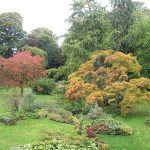

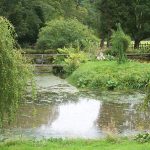
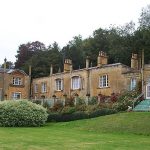
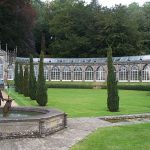
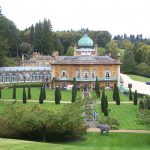
Hidcote, Gloucestershire
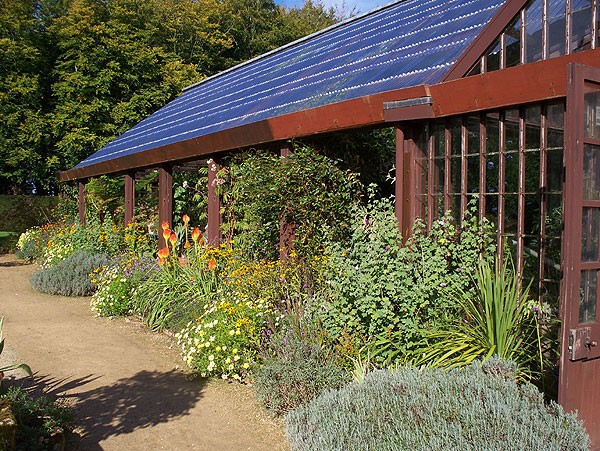 National Trust
National Trust
The glory of Hidcote is the series of gardens, the house being small and not of particular interest.
I started my tour by heading for the kitchen garden, which as well as the inevitable vegetables contained some attractive swathes of tall flowers. The rest of the gardens follow Arts & Crafts principles, being arranged as formal garden ‘rooms’ near the house with a more naturalistic style in the outer reaches. The outer parts include a Great Lawn and a Long Walk.
The creator of the garden, Major Lawrence Johnson, acquired the house and estate in 1907. Johnson had a serious interest in plants and plant collecting.
The estate is well worth a visit if you are interested in gardens. It is possible to walk round everything in under 2 hours.
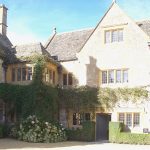
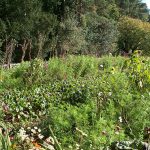
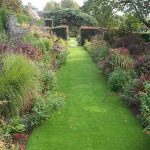
Woodchester Mansion, Gloucestershire
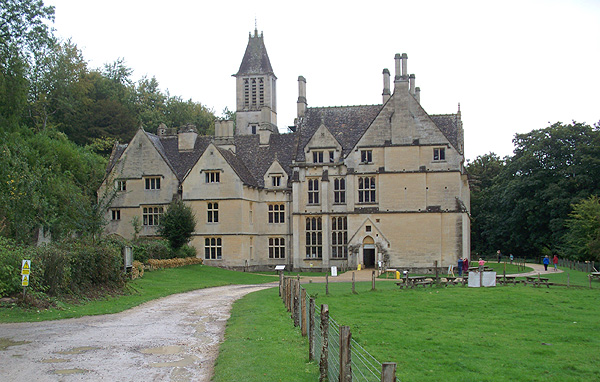 Private trust The mansion is managed by a private trust, while the grounds are managed by the National Trust.
Private trust The mansion is managed by a private trust, while the grounds are managed by the National Trust.
The construction of Woodchester Mansion, a Gothic Revival house, was commenced around 1856 and abandoned around 1870. The house was never completed as the family ran out of money and heart for the project. Externally the house looks complete with roofs and windows in place, but internally floors are missing and walls and vaulting are unplastered allowing the underlying structural elements uniquely to be seen.
In tune with the Gothic style, the house has a considerable amount of internal stone vaulting, which requires to resist its thrust the buttresses visible externally. The intended vaulting was not fitted in the Dining Room and Library, and these spaces remain open to roof level. Most parts of three floors and the cellar can be visited.
Parts of the house have sustained considerable water and frost damage since the 19th century, and the Woodchester Mansion Trust is attempting to carry out repairs and return the mansion to its 1870’s condition.
The mansion is of considerable interest, particularly to those interested in architecture. The NT estate offers long walks through woodland and past lakes.
Parking is at the NT car park by the road. Visitors to the mansion face either a 1 mile walk or a wait for the shuttle buggy. There is an entrance charge for the house. The lakes are another mile further on – that’s a 4 mile walk to see the lot on foot. On your return, watch out for the inconspicuous and unsigned steps up to the car park. 🙁
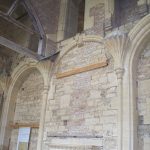
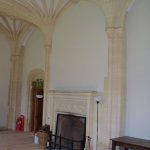
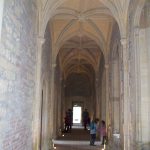
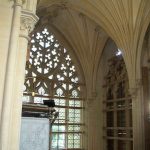
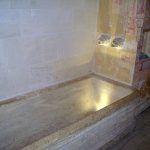
Blackfriars (Gloucester)
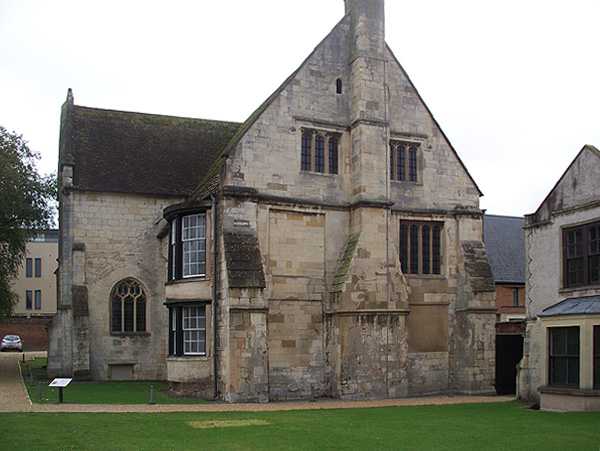 English Heritage
English Heritage
Remains of a Dominican friary, sited in the centre of Gloucester, and finished about 1270. After the dissolution of the monasteries, the church was shortened and converted into a Tudor mansion, and the outbuildings into a cloth factory. Later additions have been stripped away so that the medieval fabric is again visible. The site is managed by Gloucester Council who use the church for events.
The church interior is well worth a look, with its surviving stonework and arches, and the interesting roof. Also see the upstairs of the building (south range) on the other side of the courtyard, which is regarded as the oldest surviving purpose built library in the country. It has original roof beams and niches where the monks worked. Note the scissor-brace roofs.
Before travelling, check the EH website for the restricted opening times. Access October-March seems to be by appointment only.
With luck, using a satnav + postcode will take you to a car park outside the friary.
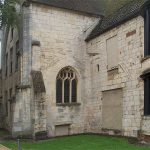
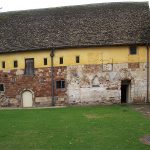
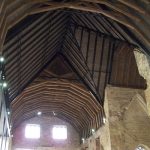
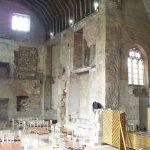
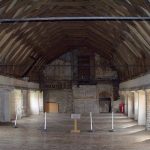
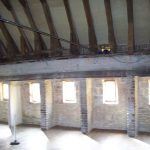
Leighton Buzzard narrow gauge Railway
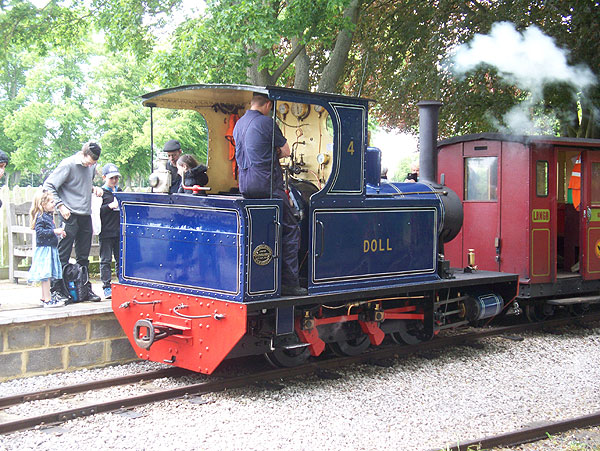
In May 2019 I paid another visit to the Leighton Buzzard narrow gauge railway, not having been there for over a decade. The track, formerly used for sand extraction, runs for about two miles from Pages Park to the Stonehenge Works, past housing estates, across several roads and alongside a country road and the Redland works.
The line has a substantial collection of steam and diesel narrow gauge locomotives collected from various places. The specially adapted passenger carriages are normally steam hauled.
The run is about 25 minutes each way. There are now a number of static exhibits at the Stonehenge end which will occupy the visitor for at least the duration between trains. A further extension of the track is planned.
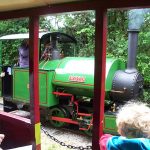
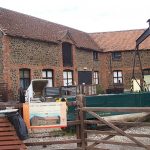
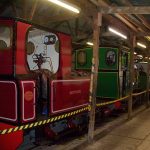
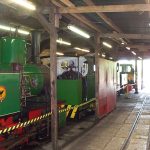
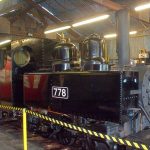
Dunster Castle, Somerset
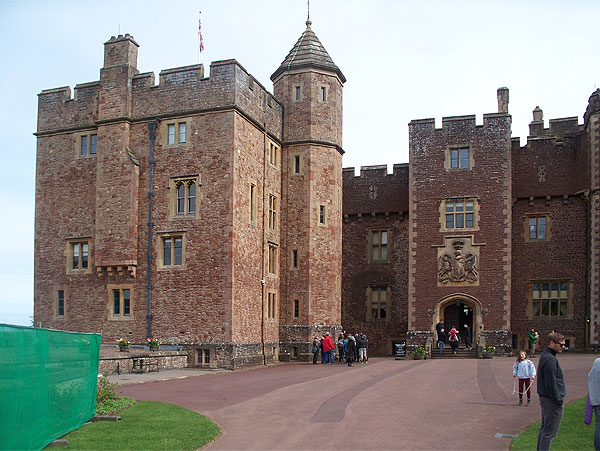
I first visited Dunster Castle some years ago but this account is from April 2019. Dunster Castle is a former motte and bailey castle, now a country house, in the village of Dunster, Somerset, England. The castle lies on the top of a steep hill called the Tor, and has been fortified since the late Anglo-Saxon period. After the Norman conquest of England in the 11th century, William de Mohun constructed a timber castle on the site as part of the pacification of Somerset. A stone shell keep was built on the motte by the start of the 12th century, and the castle survived a siege during the early years of the Anarchy. At the end of the 14th century the de Mohuns sold the castle to the Luttrell family, who continued to occupy the property until the late 20th century.
The castle was expanded several times by the Luttrell family during the 17th and 18th centuries; they built a large manor house within the Lower Ward of the castle in 1617, and this was extensively modernised, first during the 1680s and then during the 1760s. The medieval castle walls were mostly destroyed following the siege of Dunster Castle at the end of the English Civil War, when Parliament ordered the defences to be slighted to prevent their further use. In the 1860s and 1870s, the architect Anthony Salvin was employed to remodel the castle to fit Victorian tastes; this work extensively changed the appearance of Dunster to make it appear more Gothic and Picturesque.
Following the death of Alexander Luttrell in 1944, the family was unable to afford the death duties on his estate. The castle and surrounding lands were sold off to a property firm, the family continuing to live in the castle as tenants. The Luttrells bought back the castle in 1954, but in 1976 Colonel Walter Luttrell gave Dunster Castle and most of its contents to the National Trust, which operates it as a tourist attraction. It is a Grade I listed building and scheduled monument. (source: Wikipedia).
The interior of the house is interesting and various rooms on the ground and first floors can be seen. The gatehouse and other castle parts remain, but if you are expecting a medieval castle, look elsewhere!
The site has a number of pleasant walks curving around the hill. The top of the hill (above the house) is flat and laid as an open lawn. Below the hill is an old watermill to the south and the village of Dunster to the west. A folly tower tops a nearby hill to the north-east.
There are foot entrances from the village, but if arriving by car, the car park entrance is on the A39 north of the village.
